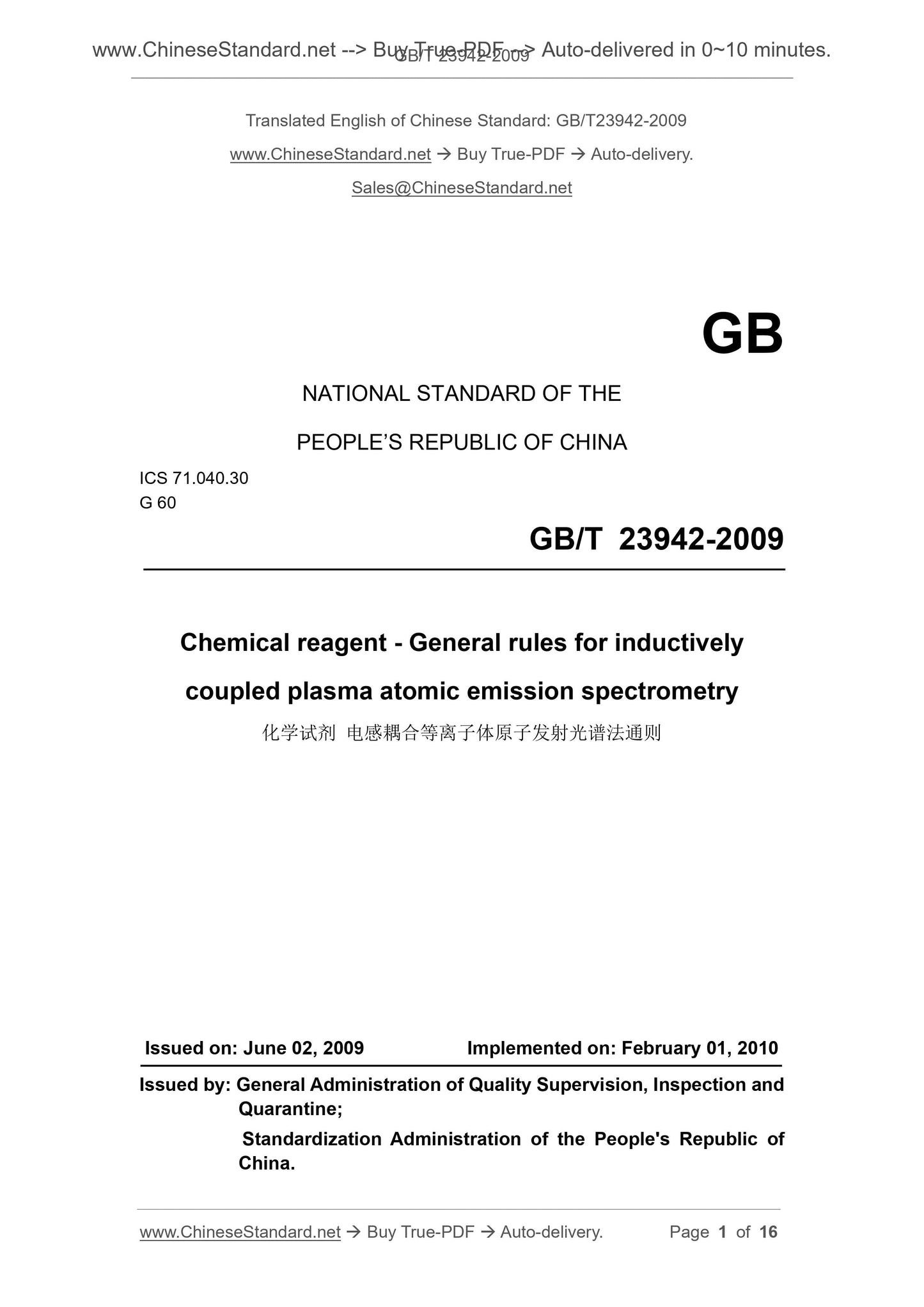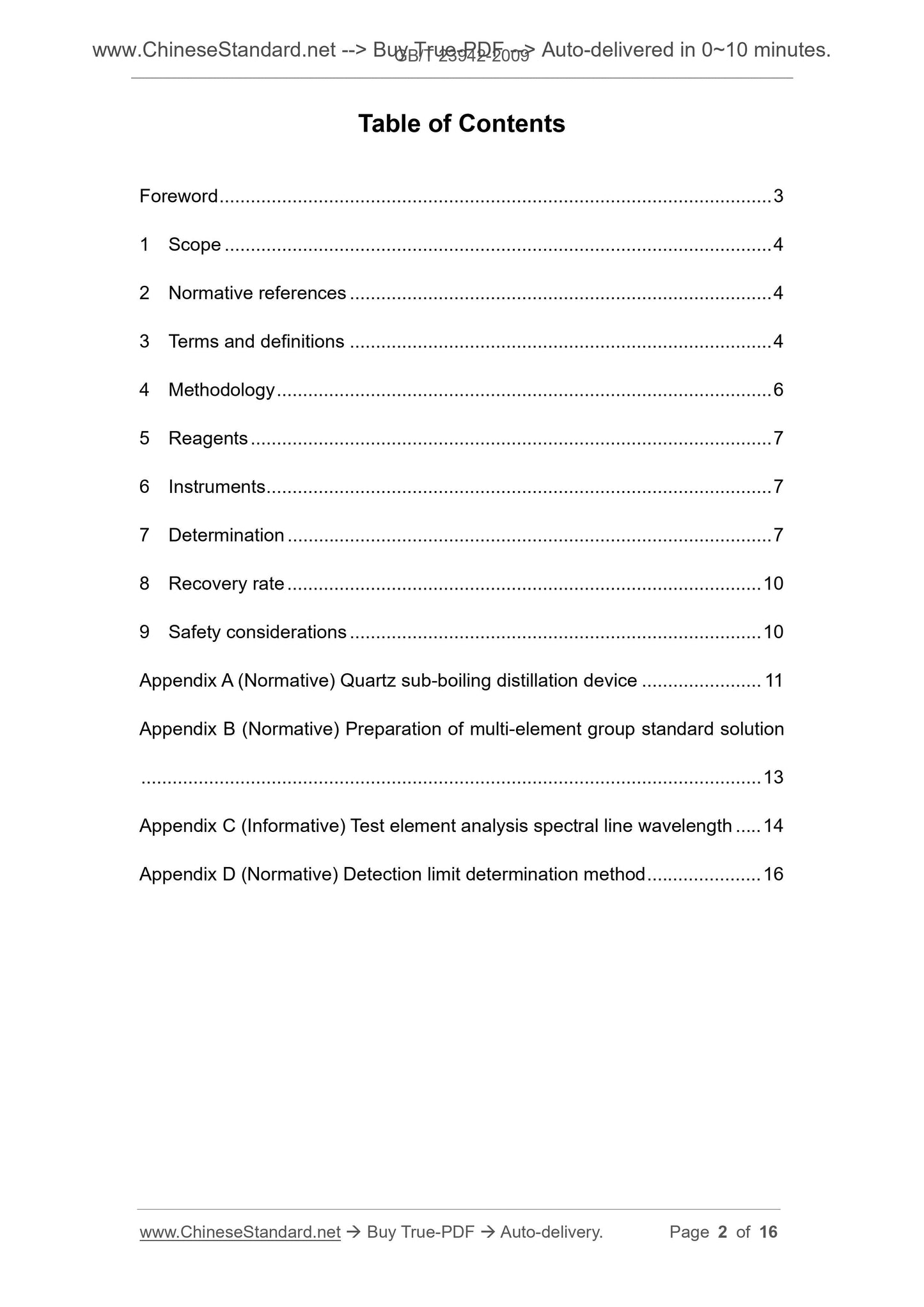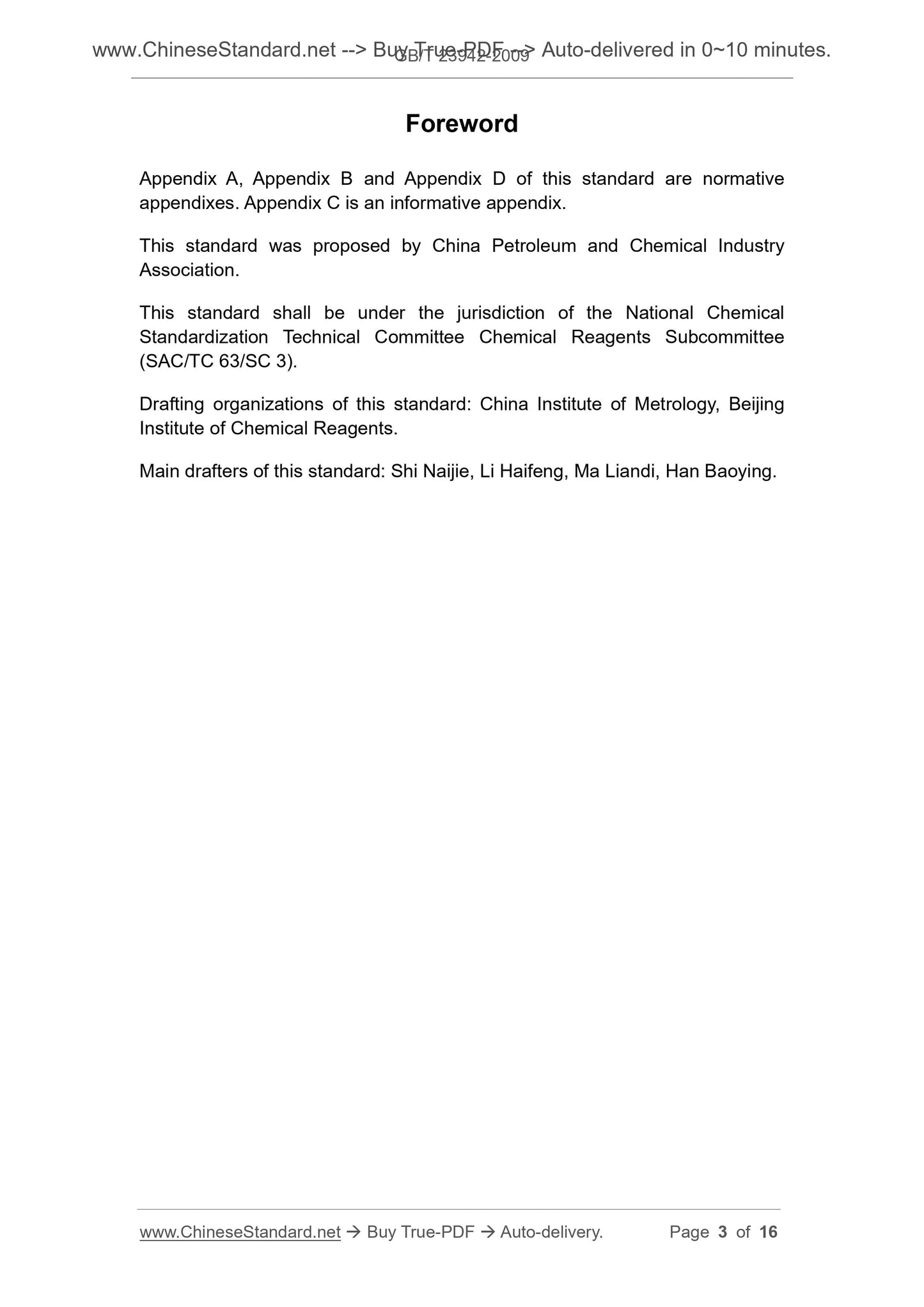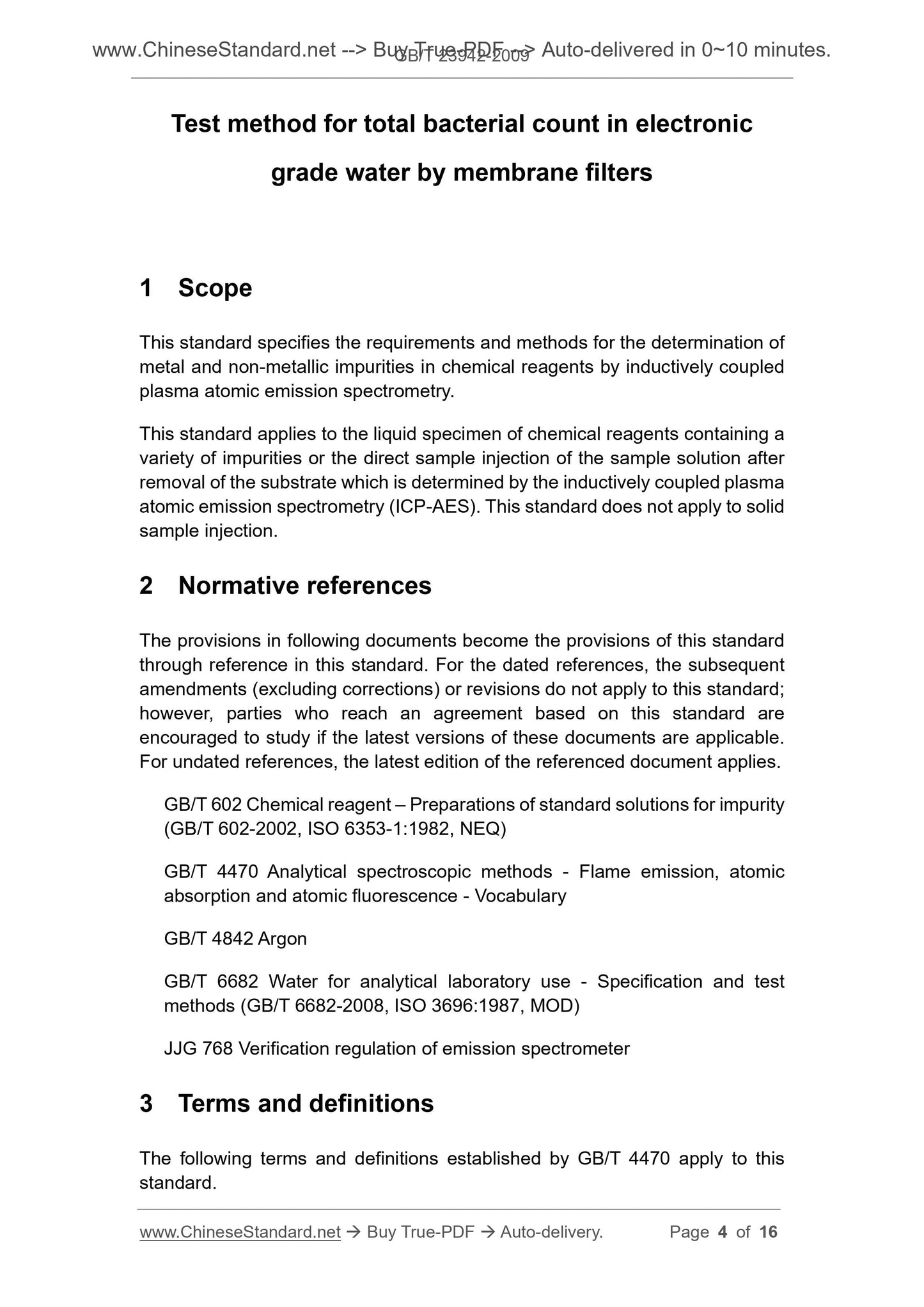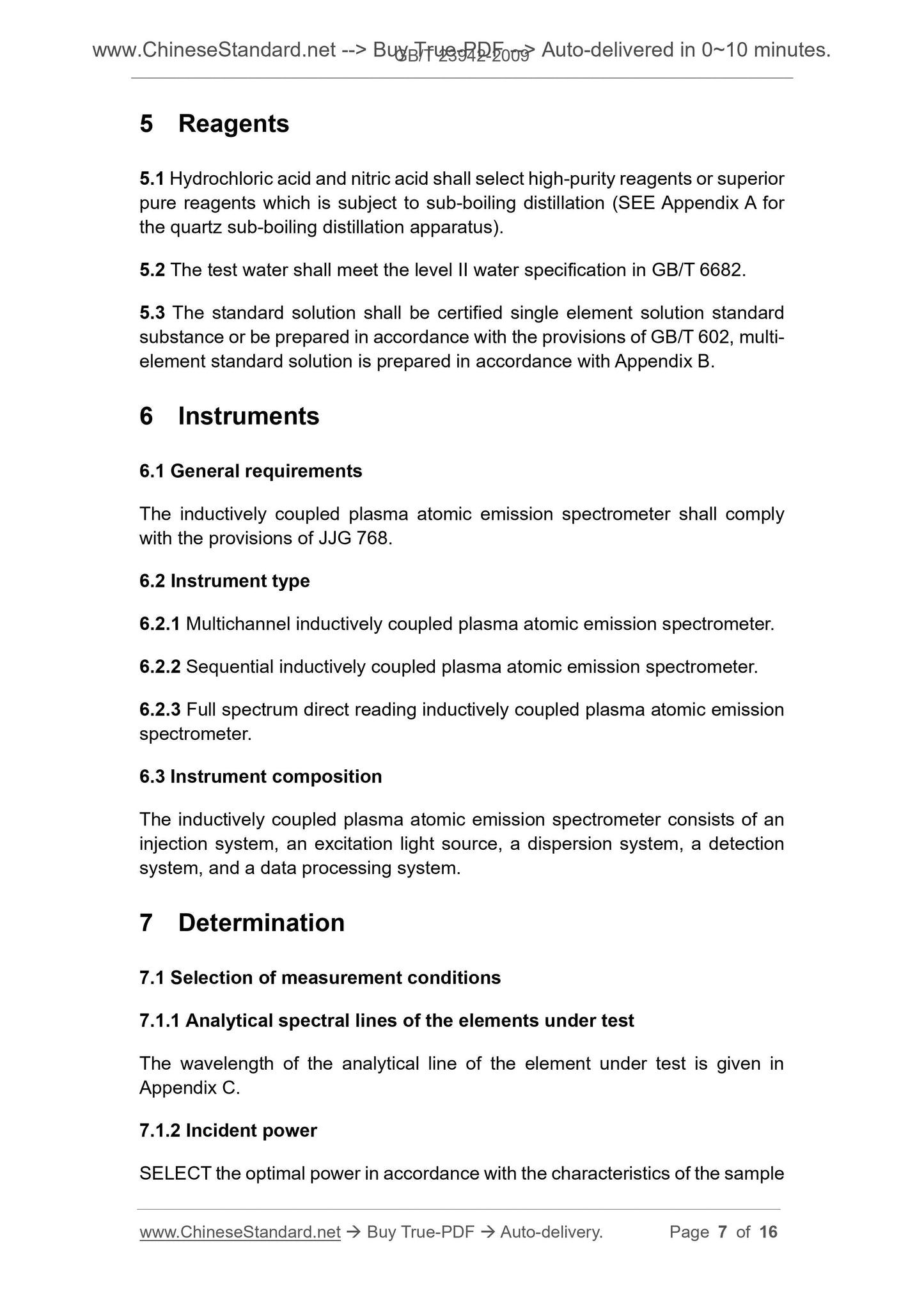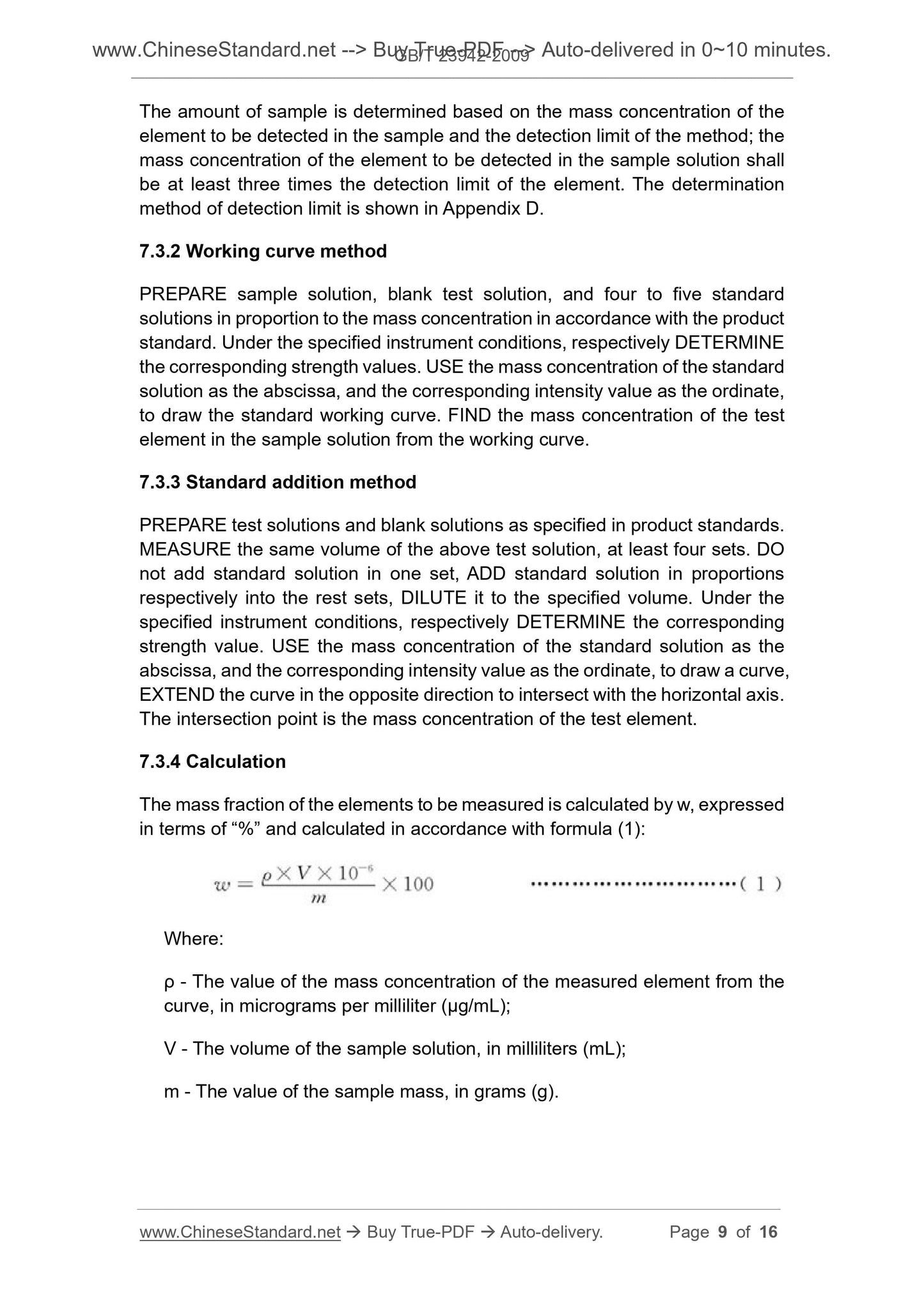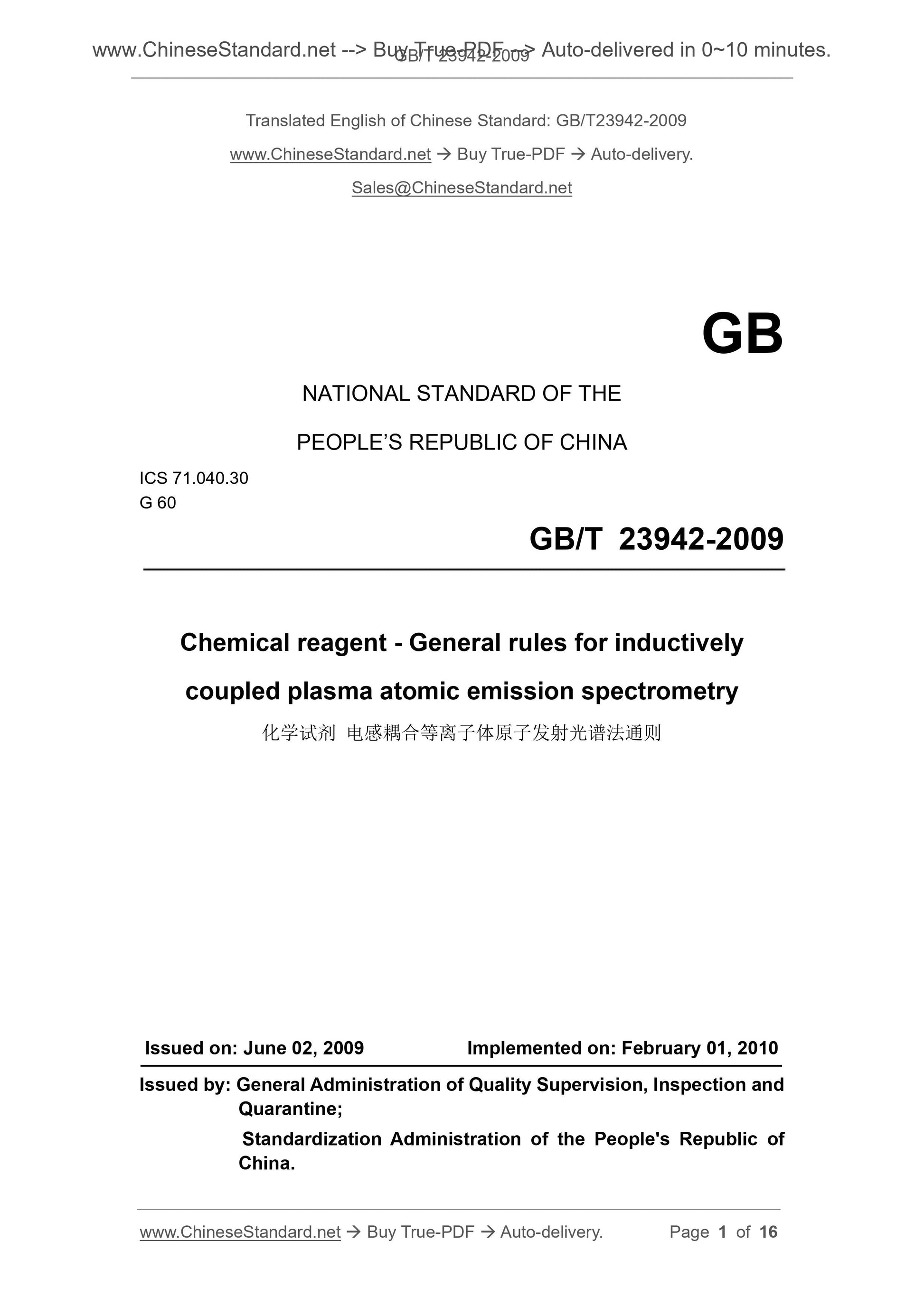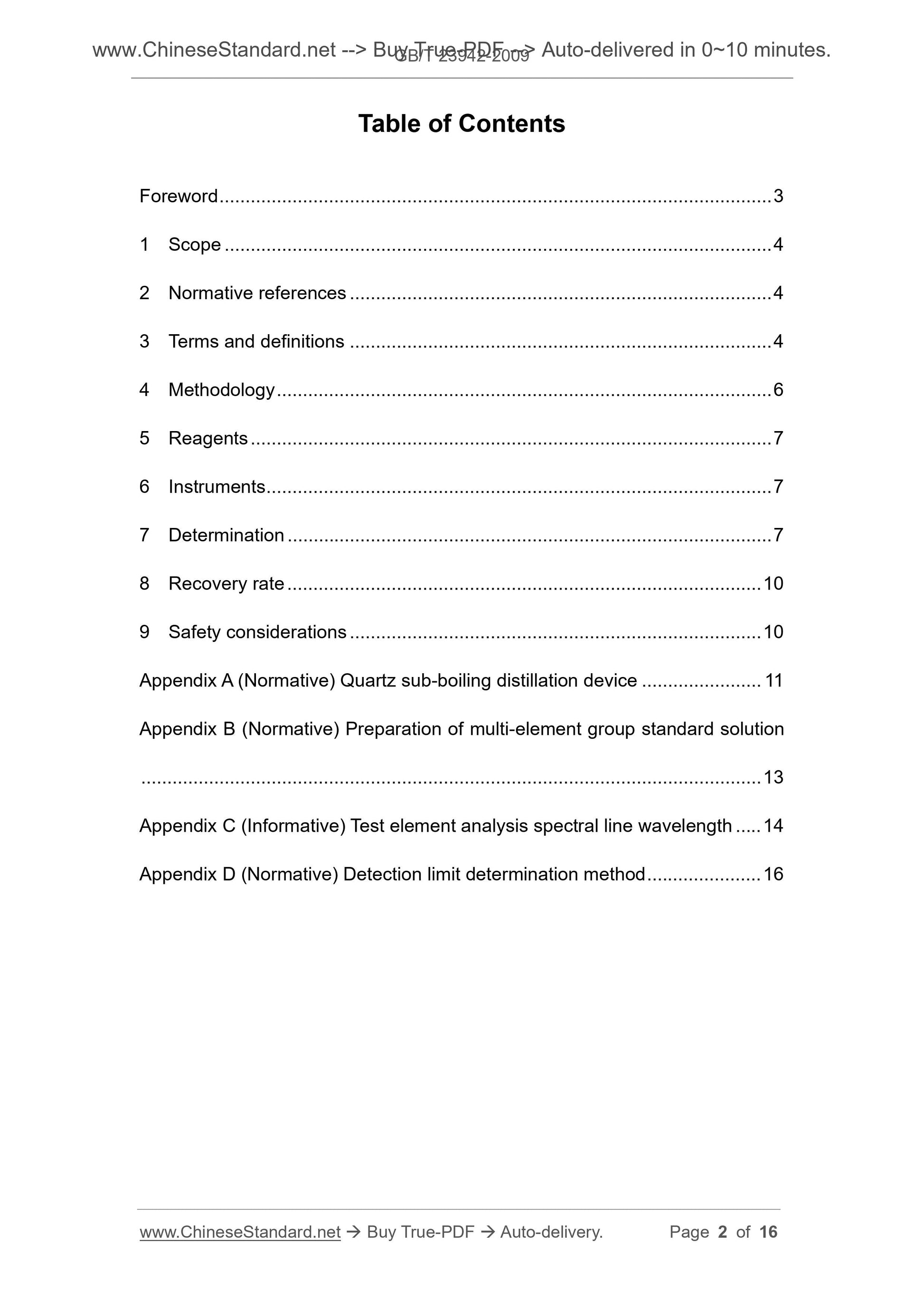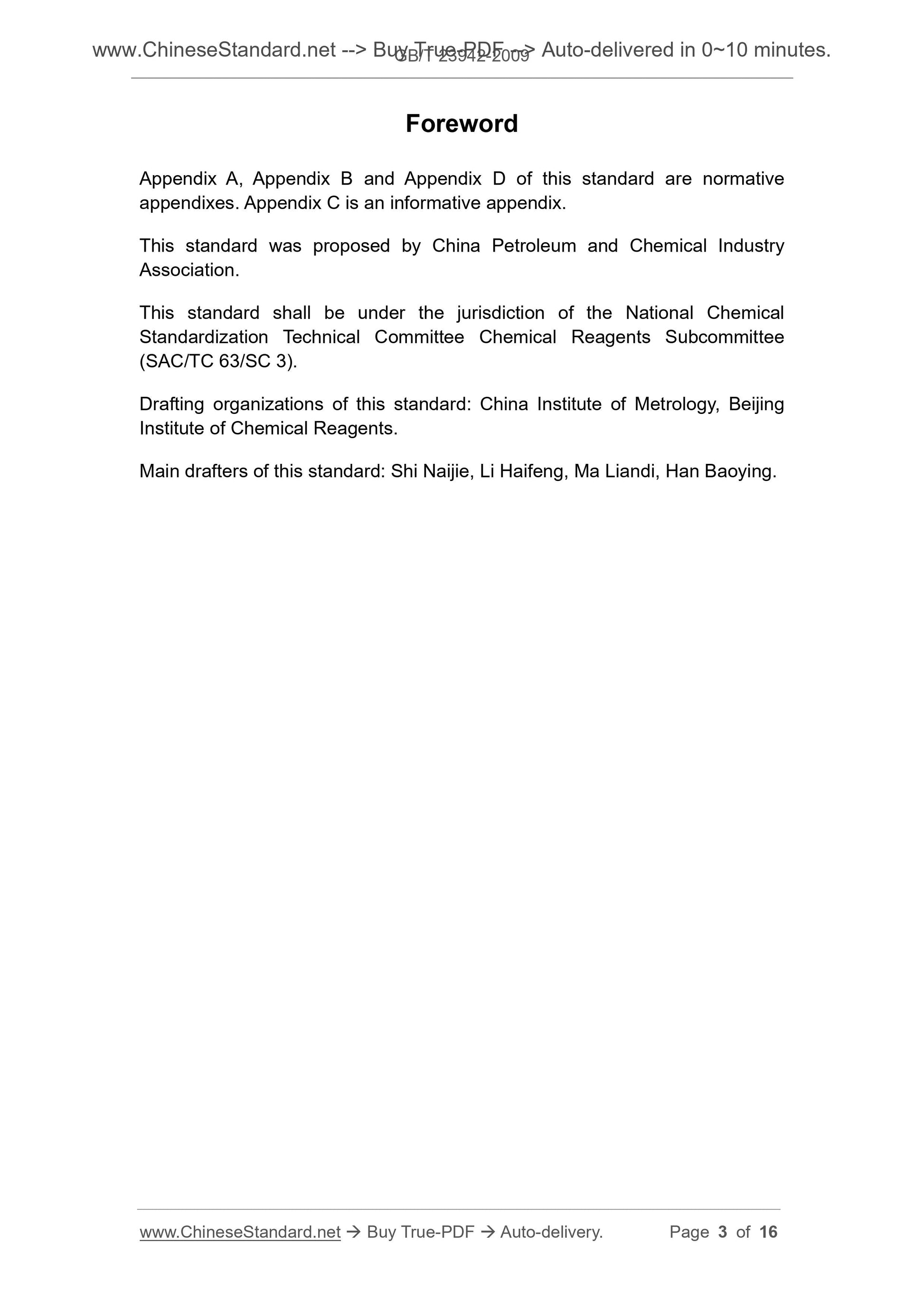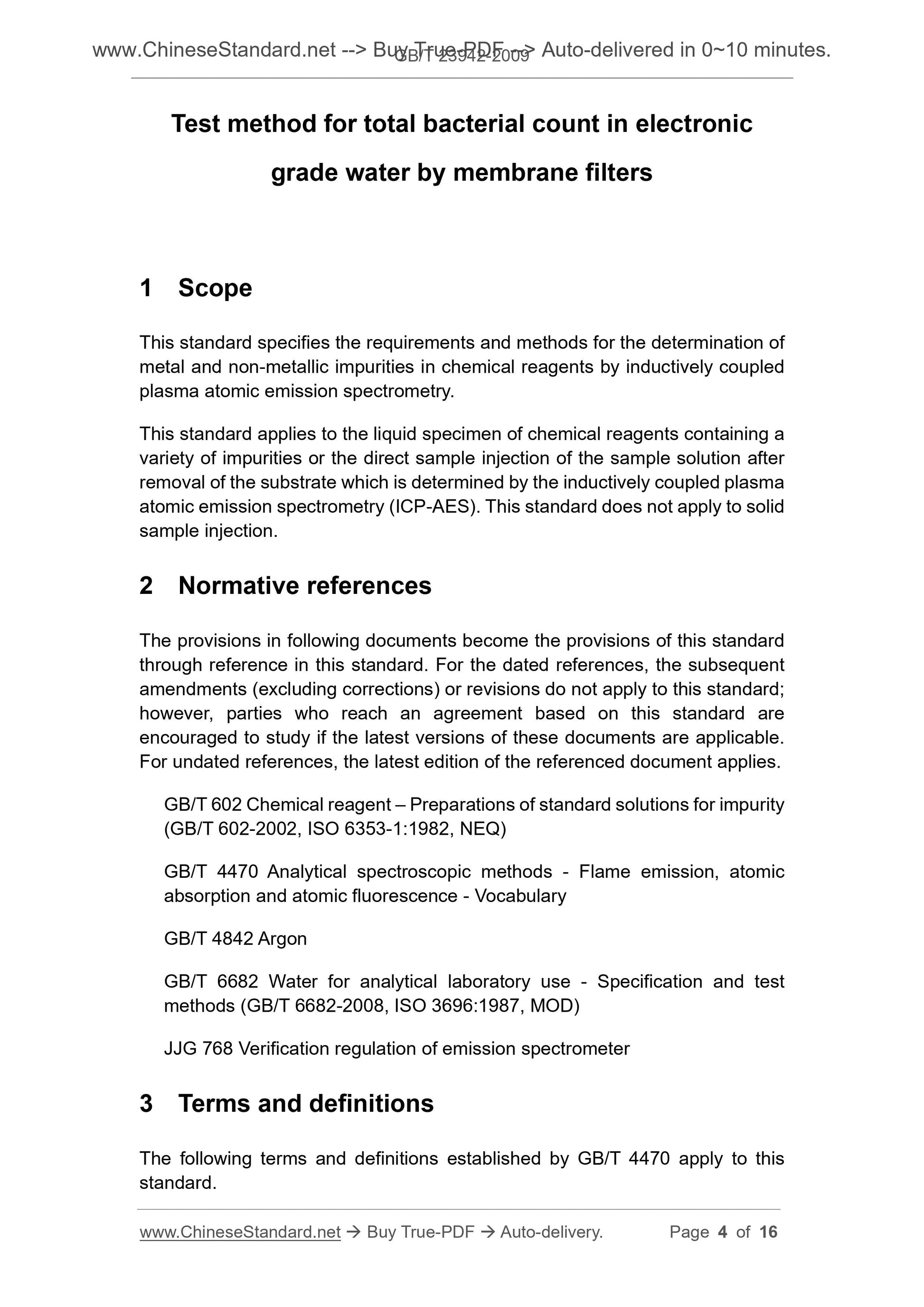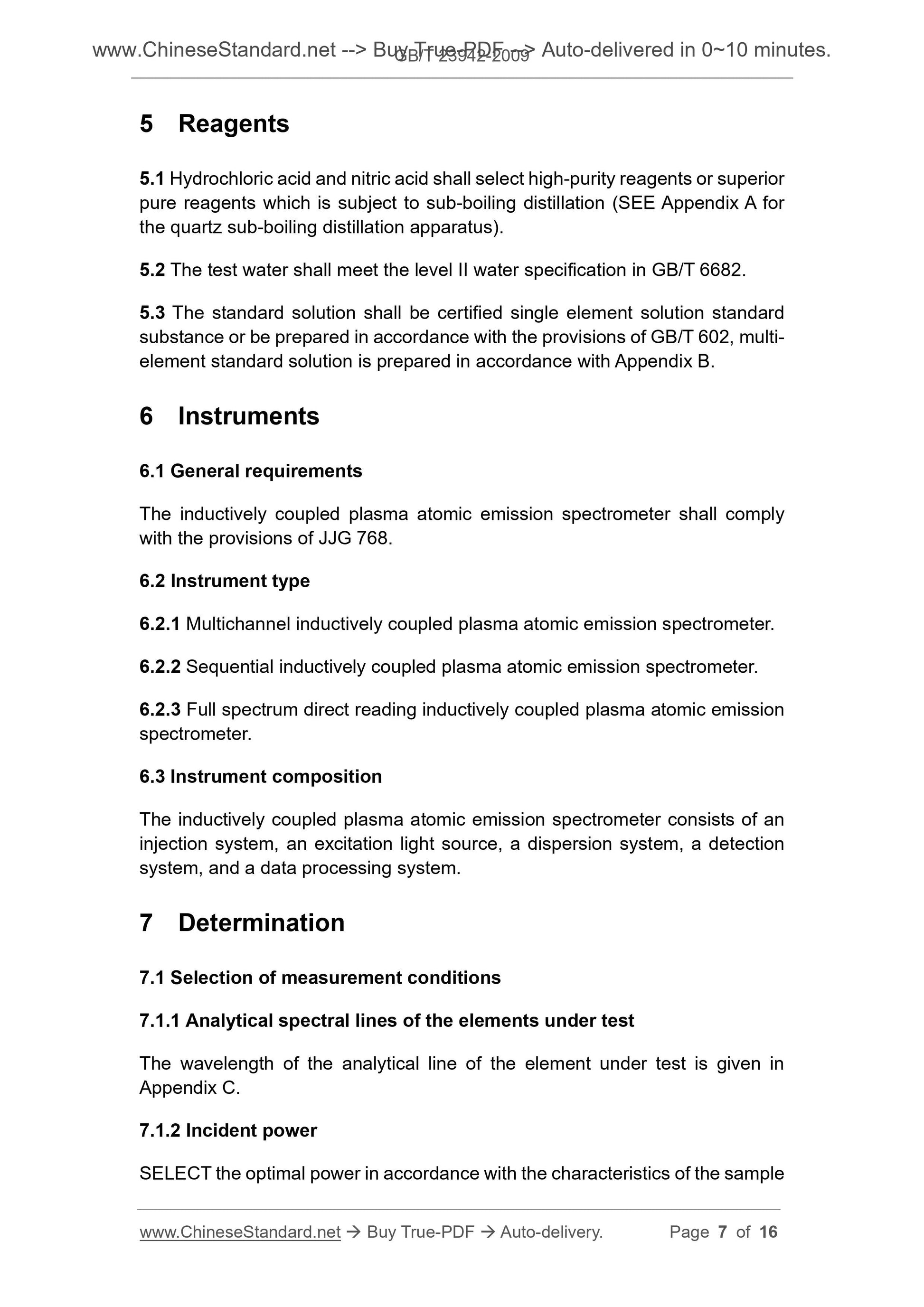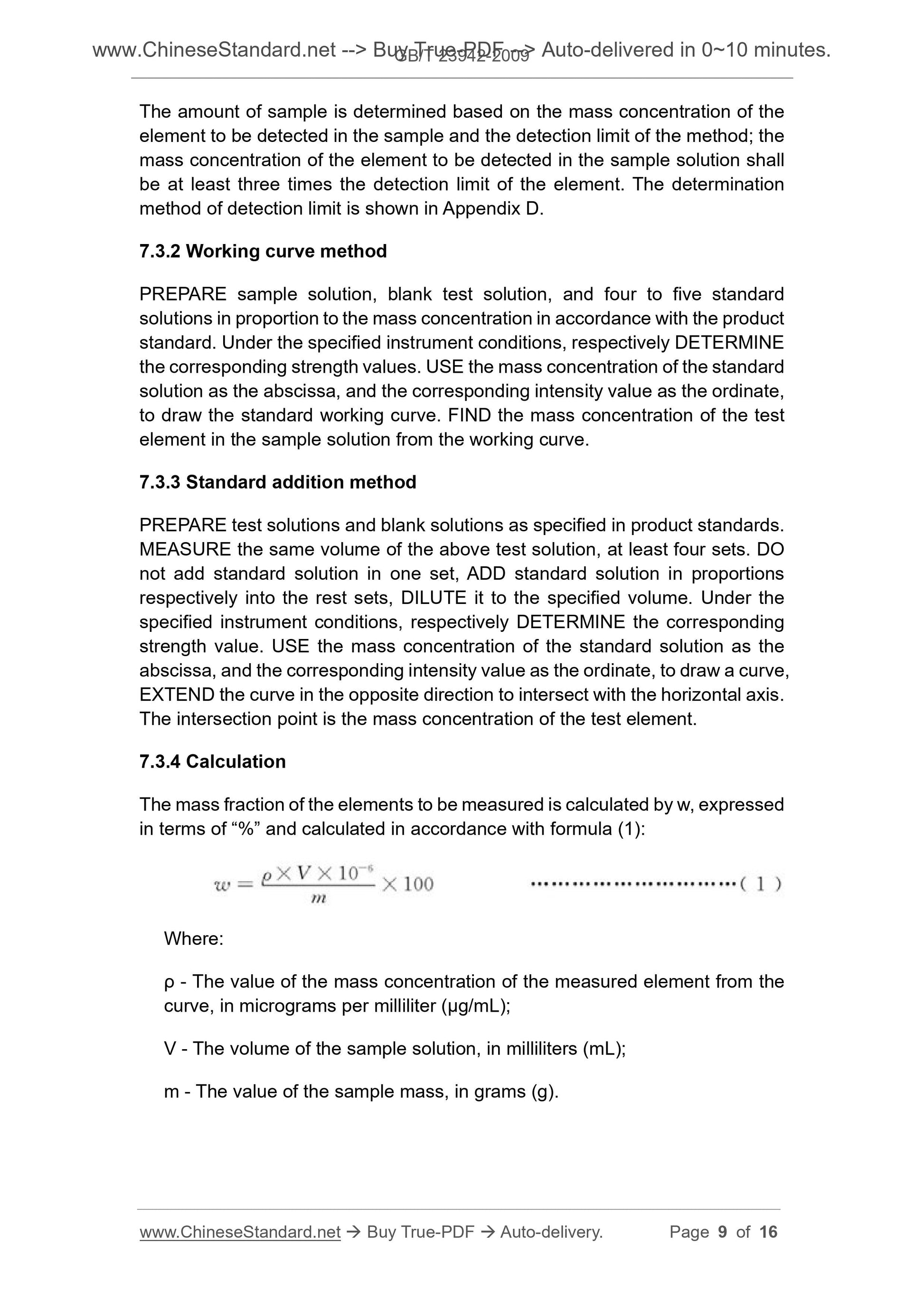1
/
of
6
www.ChineseStandard.us -- Field Test Asia Pte. Ltd.
GB/T 23942-2009 English PDF (GB/T23942-2009)
GB/T 23942-2009 English PDF (GB/T23942-2009)
Regular price
$145.00
Regular price
Sale price
$145.00
Unit price
/
per
Shipping calculated at checkout.
Couldn't load pickup availability
GB/T 23942-2009: Chemical reagent - General rules for inductively coupled plasma atomic emission spectrometry
Delivery: 9 seconds. Download (and Email) true-PDF + Invoice.Get Quotation: Click GB/T 23942-2009 (Self-service in 1-minute)
Newer / historical versions: GB/T 23942-2009
Preview True-PDF
Scope
This standard specifies the requirements and methods for the determination ofmetal and non-metallic impurities in chemical reagents by inductively coupled
plasma atomic emission spectrometry.
This standard applies to the liquid specimen of chemical reagents containing a
variety of impurities or the direct sample injection of the sample solution after
removal of the substrate which is determined by the inductively coupled plasma
atomic emission spectrometry (ICP-AES). This standard does not apply to solid
sample injection.
Basic Data
| Standard ID | GB/T 23942-2009 (GB/T23942-2009) |
| Description (Translated English) | Chemical reagent - General rules for inductively coupled plasma atomic emission spectrometry |
| Sector / Industry | National Standard (Recommended) |
| Classification of Chinese Standard | G60 |
| Classification of International Standard | 71.040.30 |
| Word Count Estimation | 12,199 |
| Date of Issue | 2009-06-02 |
| Date of Implementation | 2010-02-01 |
| Regulation (derived from) | National Standard Approval Announcement 2009 No.8 (Total No.148) |
| Issuing agency(ies) | General Administration of Quality Supervision, Inspection and Quarantine of the People's Republic of China, Standardization Administration of the People's Republic of China |
| Summary | This standard specifies the requirements and the determination of measuring chemicals and non-metallic impurities in metals by inductively coupled plasma atomic emission spectrometry. This standard applies to chemical reagent liquid sample containing a variety of impurities or after removal of the test solution directly into the matrix samples by inductively coupled plasma atomic emission spectroscopy (ICP-AES) were measured. This standard does not apply to solid sampling. |
Share
